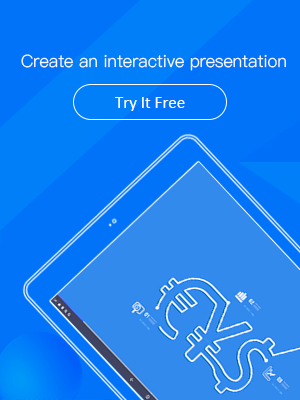Electronic Catalogue vs. Traditional Catalog: Which Wins for Modern Businesses?
In the evolving landscape of business marketing, catalogs remain a cornerstone for showcasing products and influencing purchasing decisions. However, with rapid technological advancements, companies face a critical choice between traditional printed catalogs and modern electronic catalogs. This article explores the key differences between these two formats—examining factors such as cost, reach, update speed, and user engagement—to help businesses determine which catalog type best aligns with their goals in today’s competitive market.
The Role of Catalogs in Business
In today’s business environment, catalogs serve as vital marketing and sales tools that seamlessly connect product discovery with customer decision-making. More than just organized product listings, catalogs provide branded experiences that communicate value, quality, and relevance. Whether in digital or print form, they enable businesses to target audiences with curated content, detailed specifications, pricing, and compelling visuals, facilitating informed purchases. Electronic catalogs elevate this role by offering interactivity, instant updates, and insightful analytics, making them indispensable components of omnichannel strategies, e-commerce integration, and global customer engagement.
Electronic Catalogue: Strengths and Limitations

Strengths:
· Cost-Effectiveness: Eliminates printing and distribution costs, enabling wider reach at a fraction of the price.
· Instant Updates: Allows real-time content changes without reprinting.
· Wider Distribution: Easily shareable via email, social media, and websites for global accessibility.
· Interactive Features: Supports videos, hyperlinks, animations, and clickable buttons to increase engagement.
· Analytics Tracking: Enables businesses to monitor user behavior and optimize content accordingly.
· Eco-Friendly: Reduces paper usage, minimizing environmental impact.
· Mobile Accessibility: Compatible with smartphones, tablets, and desktops.
· Custom Branding: Easily incorporates brand colors, logos, and fonts.
· Search Functionality: Facilitates quick content discovery through keyword searches.
Limitations:
· Internet Dependency: Requires online access, limiting usability in offline contexts.
· Digital Divide: May exclude less tech-savvy audiences.
· Security Concerns: Vulnerable to unauthorized access and data breaches.
· Less Tangibility: Lacks the physical and tactile experience of print.
· Technical Skills Required: Creation and management demand digital proficiency.
Traditional Catalog: Strengths and Limitations

Strengths:
· Tangible Experience: Physical format provides sensory engagement and perceived credibility.
· No Digital Barriers: Accessible without internet or devices.
· High Credibility: Viewed as trustworthy, particularly among older demographics.
· Memorability: Well-designed print catalogs can leave a lasting impression.
· Effective In-Person: Ideal for trade shows, direct mail, and events.
Limitations:
· High Production Costs: Printing, shipping, and storage are expensive.
· Limited Reach: Physical distribution confines audience size and geography.
· Inflexibility: Updates require costly and time-consuming reprints.
· No Analytics: Lack of data on reader engagement and behavior.
· Environmental Impact: Uses paper and ink, contributing to waste.
Comparison Table: Electronic Catalogue vs. Traditional Catalog
| Feature / Function | Electronic Catalogue | Traditional Catalog |
| Cost | Low-cost distribution and no printing | High production, printing, and shipping costs |
| Update Speed | Instantly editable and republishable | Requires reprinting for any update |
| Distribution | Shareable via link, email, and social media | Delivered by hand, mail, or display |
| Audience Reach | Global access 24/7 | Limited to physical reach |
| Interactivity | Includes video, animation, links, and buttons | Static format with no multimedia |
| Analytics | Track viewer behavior and engagement metrics | No tracking capability |
| Device Compatibility | Mobile, tablet, and desktop friendly | Physical only |
| Environmental Impact | Eco-friendly, paperless | Paper use and carbon footprint |
| Searchability | Keyword search for easy navigation | Manual browsing only |
| Storage & Portability | Cloud-based and easily accessible | Requires physical storage space |
| Customization | Easily personalized per audience segment | One-size-fits-all design |
| SEO Potential | Search engine optimized for discoverability | No online presence |
| Durability | Not subject to physical wear or tear | Prone to damage, aging, and loss |
| Production Time | Quick creation and deployment | Slow and resource-intensive |
| User Engagement | Enhanced with clickable content and animations | Limited to passive reading |
| Branding Options | Flexible with colors, fonts, and logos | Limited by printer capabilities |
FlipHTML5: A Powerful Catalog Generator
FlipHTML5 is an innovative digital publishing platform that empowers businesses to create stunning electronic catalogs with ease. FlipHTML5 enables users to transform static catalogs into interactive digital catalogs. It supports embedding videos, hyperlinks, animations, and real-time updates, enhancing customer engagement and brand storytelling. Compatible across all devices, FlipHTML5 catalogs are optimized for seamless sharing and online discoverability, making them perfect for modern businesses seeking to expand their reach and boost sales while minimizing costs.
Key features to streamline the catalog creation process:
· Excel to Catalog: Quickly convert your product data files into polished catalogs. FlipHTML5’s AI seamlessly matches your data to beautifully designed templates, saving time and ensuring consistency.
· AI Catalog Maker: Just provide simple prompts, and watch the AI generate fully designed, interactive catalogs tailored to your needs—no design skills required.
· Extensive Catalog Templates: Access a vast library of highly customizable templates that cover various industries and use cases, all enriched with multimedia elements for maximum engagement.
Conclusion
In today’s fast-paced digital world, electronic catalogs offer unmatched speed, flexibility, and valuable insights that empower businesses to engage customers effectively and scale rapidly. While traditional catalogs provide a tactile experience and trusted credibility, their limitations in cost and adaptability are increasingly apparent. For modern businesses seeking growth and innovation, electronic catalogs present a smarter, future-ready solution that drives both reach and results.






